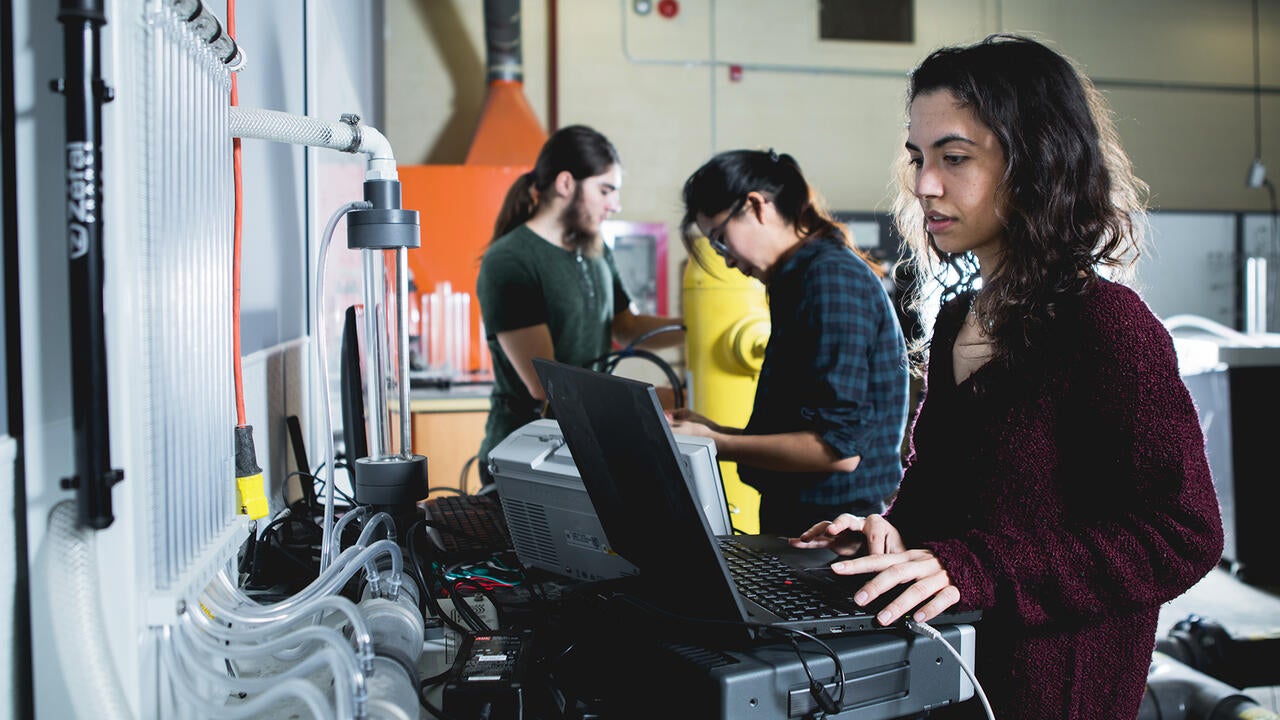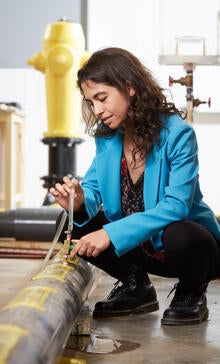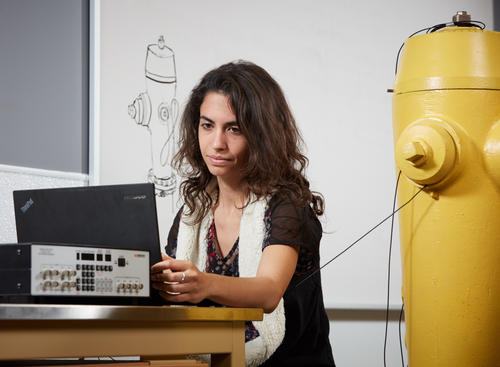
AI could help cities better detect water leaks
Waterloo researcher uses sound and artificial intelligence technology to detect problems.

Waterloo researcher uses sound and artificial intelligence technology to detect problems.
By Brian Caldwell Faculty of EngineeringCostly water losses in municipal water systems could be significantly reduced using sensors and new artificial intelligence (AI) technology.
Developed by researchers at the University of Waterloo in collaboration with industry partners, the technology has the potential to detect even small leaks in pipes.It combines sophisticated signal processing techniques and AI software to identify telltale signs of leaks carried via sound in water pipes.
The acoustic signatures are recorded by hydrophone sensors that can be easily and inexpensively installed in existing fire hydrants without excavation or taking them out of service.
 Roya Cody
Roya Cody
“This would allow cities to use their resources for maintenance and repairs much more effectively,” said lead researcher Roya Cody, a civil engineering PhD candidate at Waterloo. “They could be more proactive as opposed to reactive.”
Municipal water systems in Canada lose an average of over 13 per cent of their clean water between treatment and delivery due to leaks, bursts and other issues. Countries with older infrastructure have even higher loss rates.
“By catching small leaks early, we can prevent costly, destructive bursts later on,” said Cody.
Researchers are now doing field tests with the hydrant sensors after reliably detecting leaks as small as 17 litres a minute in the lab.
They are also working on ways to pinpoint the location of leaks, which would allow municipalities to identify, prioritize and carry out repairs.
“Right now they react to situations by sending workers out when there is flooding or to inspect a particular pipe if it’s due to be checked because of its age,” Cody said.

The sensor technology works by pre-processing acoustic data using advanced signal processing techniques to highlight components associated with leaks.
That makes it possible for machine learning algorithms to identify leaks by distinguishing their signs from the many other sources of noise in a water distribution system.
Cody collaborates with a team of researchers in the Structural Dynamics Identification and Control Laboratory, including post-doctoral fellow Jinane Harmouche and Sriram Narasimhan, a civil and environmental engineering professor and Canada Research Chair in Smart Infrastructure at Waterloo.
A paper on their research, Leak detection in water distribution pipes using singular spectrum analysis, was recently published in the Urban Water Journal.

Read more
Waterloo research group joins global partnership on AI

Read more
Combining machine learning techniques with real-world scenarios to combat forest fires

Read more
Researchers combine wearable technology & AI to predict the onset of health problems.
Read
Engineering stories
Visit
Waterloo Engineering home
Contact
Waterloo Engineering
The University of Waterloo acknowledges that much of our work takes place on the traditional territory of the Neutral, Anishinaabeg, and Haudenosaunee peoples. Our main campus is situated on the Haldimand Tract, the land granted to the Six Nations that includes six miles on each side of the Grand River. Our active work toward reconciliation takes place across our campuses through research, learning, teaching, and community building, and is co-ordinated within the Office of Indigenous Relations.